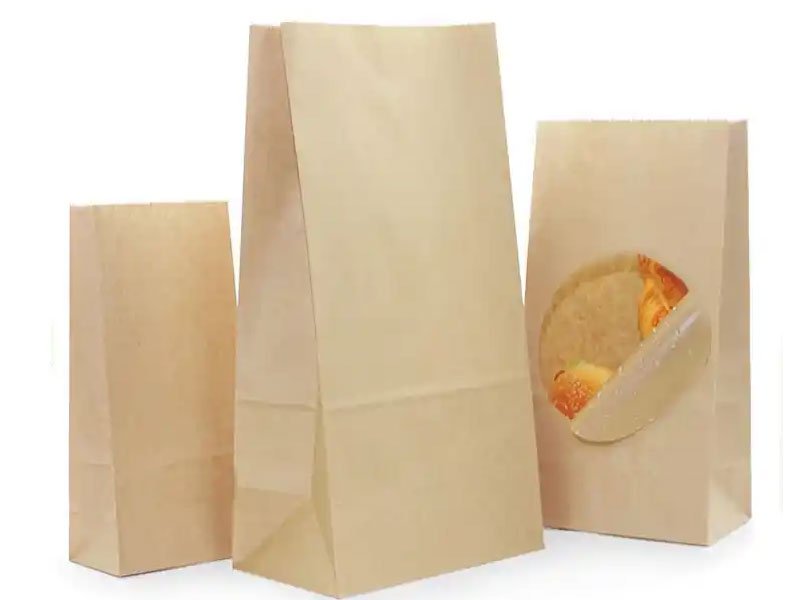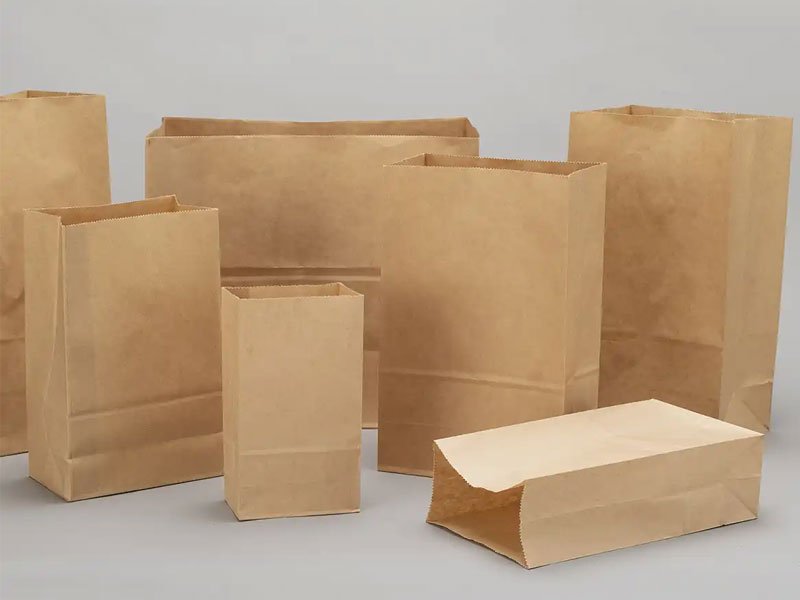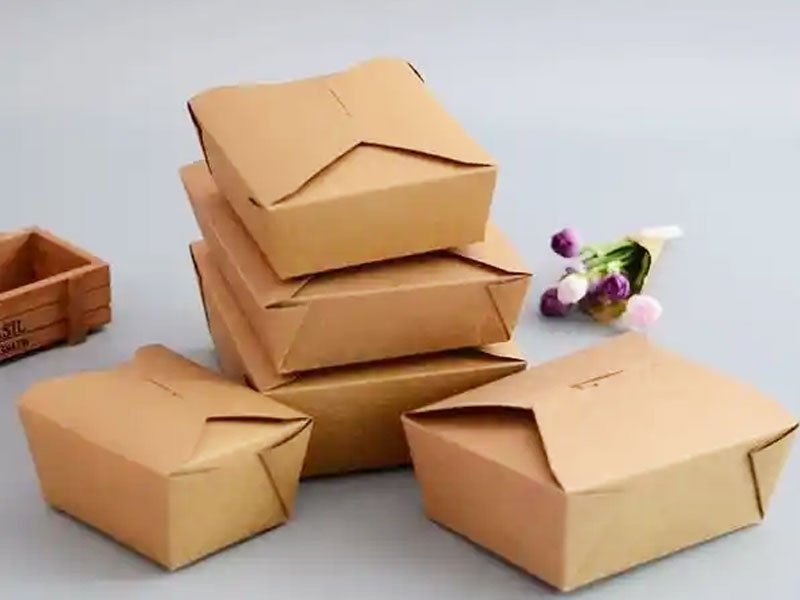With the improvement of environmental awareness, more and more consumers and companies are beginning to pay attention to green and environmentally friendly shopping bags, especially "Are paper bags biodegradable?" Are you also curious about this? This article will explore the biodegradable characteristics, compostability, environmental advantages and limitations of paper bags to help everyone better understand the importance of paper bags and how to deal with them.

What Are "Biodegradable Paper Bags"?
Biodegradable refers to the process by which materials can be decomposed into harmless substances by the action of microorganisms in the natural environment.
Paper bags are made of natural fibers, such as wood pulp and recycled paper, which are natural organic materials and are therefore biodegradable in nature.
"Biodegradable" Vs "Compostable":
Biodegradable emphasizes that the material will eventually decompose naturally, not necessarily in a certain time or environmental conditions;
Compostable means that the material can decompose in a shorter time under specific conditions (such as a composting environment) without leaving harmful residues.
All compostable paper bags must be biodegradable, but not all biodegradable paper bags can be composted quickly or safely.

Are Paper Bags Biodegradable?
The answer is yes, paper bags themselves are made of natural fibers, which are biodegradable and usually compostable. However, the specific effect depends on the type of paper bag, the coating and glue used, and the environmental conditions.
Uncoated paper bags with water-based inks and plant-based glues are the most ideal biodegradable paper bags.
Correct recycling and composting methods are the key to realizing their environmental value.
Paper bags are not perfect, but compared to plastic bags, they are a more environmentally friendly alternative, especially when combined with reduction and reuse, which is the sustainable way.
Pros and Cons of Paper Bags
Pros of Paper Bags:
- Natural ingredients: Paper bags are mostly made of kraft paper, unbleached paper or recycled paper without chemical additives, and contain cellulose, which is easily decomposed by microorganisms.
- Faster degradation rate: In the right environment, paper bags can usually decompose naturally within weeks to months.
- Recyclable and reusable: Paper bags can be processed by paper recycling systems, or crushed and composted to reduce landfill pressure.
Cons of Paper Bags
- The manufacturing process consumes a lot of resources: the paper industry consumes a lot of energy and water, and the carbon footprint of paper bags is not zero.
- Recycling and composting need to be done correctly: different paper bags and different pollution levels have very different composting and recycling effects. Paper bags with plastic coatings and grease stains are not suitable for composting.
Mistakenly believe that all paper bags can replace plastic bags infinitely: paper bags have relatively low water resistance and durability, and the number of reuses is limited. If you buy new bags frequently, the actual carbon footprint will increase.
Choosing truly environmentally friendly paper bags requires looking for certification marks (such as ASTM D6400, EN 13432 , and combining the concept of reducing use and reusing to truly reduce the environmental burden.

The Principle of Paper Bag Biodegradation:
The fibers in the paper bag are decomposed into water, carbon dioxide and biomass under the action of microorganisms (fungi, bacteria). This process is affected by environmental humidity, temperature, oxygen content and material composition.
Key Factors in Paper Bag Biodegradation
Coating and glue: If the surface of the paper bag has plastic coating, paraffin, synthetic glue or waterproofing, it will significantly reduce its biodegradation rate and even make it non-compostable.
Printing ink: Environmentally friendly paper bags generally use water-based or soy inks, which are biodegradable; non-environmentally friendly inks may contain heavy metals, which hinder degradation.
Material type: Brown kraft paper is widely used because of its loose structure and fast biodegradation rate; bleached paper and bags with more waste paper components may degrade more slowly.
Environmental conditions: Aerobic environment (such as home composting) is conducive to rapid degradation; in the anoxic environment of landfills, the decomposition of paper bags will be greatly prolonged.

Comparison of Degradation Time of Paper Bags and Plastic Bags
| Material Type | Typical Degradation Time | Degradation Conditions |
|---|---|---|
| Paper Bags (Uncoated) | 4 weeks to 6 months | Home composting, industrial composting |
| Plastic Bags | Over 500 years | Extremely difficult to degrade in natural environment |
| Biodegradable Plastic Bags | 6 months to 1 year (under specific conditions) | Industrial composting systems |
How to Properly Dispose of Paper Bags? Paper Bag Recycling and Composting
Steps for composting paper bags at home
- Remove foreign matter: remove plastic handles, labels and glue residues to avoid non-compostable ingredients.
- Shred the paper bag: Shredding helps microorganisms accelerate degradation.
- Balance composting materials: Paper bags are a "brown" carbon source and should be used with green kitchen waste.
- Keep it ventilated and moist: Turn the pile regularly to avoid composting too wet or lacking oxygen.
Precautions for paper bag recycling
- Confirm local recycling policies: Uncoated and non-honeycomb pulp paper bags can be recycled in most areas.
- Clean: Residual food or oil stains will affect the quality of recycling.
- Avoid mixing non-paper bag materials: such as plastic film, aluminum foil, etc.

Are Brown Paper Bags Biodegradable?
Kraft paper bags are indeed biodegradable, meaning they will naturally break down in the environment without causing harm.Kraft paper bags are primarily made from unbleached kraft paper, which is derived from sustainably harvested wood pulp and breaks down much faster than plastic alternatives—typically in 2 to 6 weeks in composting conditions.
Why are kraft paper bags biodegradable?
Material composition: Kraft paper bags are made from natural fibers, such as wood pulp or recycled paper, which are easily digested by microorganisms.
Decomposition time: Compared to plastic bags, which can take hundreds of years to decompose, kraft paper bags can take anywhere from a few weeks to a few months to decompose, depending on environmental conditions such as humidity, temperature, and microbial activity.
Compostability: Many kraft paper bags are also compostable, meaning they can safely break down in a home or industrial composting environment without releasing any toxic residues.
Environmental benefits: Using kraft paper bags reduces your carbon footprint—studies show they can emit up to 70% less CO2 than plastic bags—and, when sourced responsibly, supports sustainable forestry practices.
Recyclability: In addition to being biodegradable, kraft paper bags can be recycled if they are clean and uncontaminated, allowing them to be reused multiple times in the paper production process.
Important Notes:
Coatings such as plastic laminates or waxes inhibit their biodegradability. Plain, uncoated kraft paper bags are the most reliably biodegradable option.
Bags that are stained with oil or food residue may not be recyclable, but if they do not contain plastic, they can usually be composted.
Proper disposal of the bag, such as placing it in a compost bin or recycling facility, is key to realizing its biodegradable benefits.
FAQ
Are all paper bags compostable?
Only uncoated, plastic-free, and ink-free paper bags are suitable for home or industrial composting.
Are white paper bags biodegradable?
Without chemical bleaching and coating, white paper bags are similar to brown kraft paper bags and can be degraded.
What is the difference between biodegradable and compostable paper bags?
Biodegradability only indicates ultimate decomposition, while compostability has time and environmental safety requirements.
Can households throw paper bags directly into the compost bin?
It is recommended to tear and remove non-paper accessories first to avoid heavy grease contamination.





